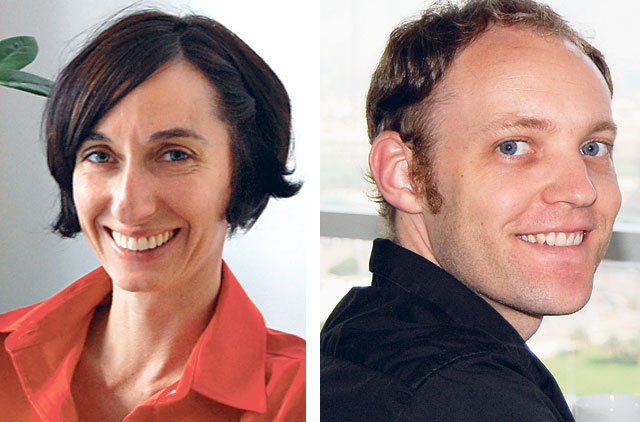
Abu Dhabi: Within four years the emirates could be home to a unique kind of sculpture that supplies power to thousands of homes if a UAE couple's dream project gets off the ground.
The project, the Land Art Generator Initiative (LAGI), hopes to bring together artists, architects, scientists and engineers to design and build a series of land installations that generate clean energy.
The plan is the brainchild of American husband-and-wife duo Robert Ferry, an architect, and Elizabeth Monoian, an artist and designer by profession.
The couple's slogan is that "renewable energy can be beautiful".
"The idea behind the initiative is to combine aesthetics with clean energy generation," Ferry said.
"It was conceived by thinking how art could become part of the solution to issues such as climate change."
"These sculptures will hopefully draw tourists from around the world. At the same time, the art itself will continuously distribute clean energy into the electrical grid with each land art sculpture having the potential to provide power to thousands of homes in the UAE," he said.
An international design competition was held recently to allow professionals from various disciplines to come together and present ideas for the public art.
Entries from more than 40 countries had been received by the time the contest came to a close in June.
A major boost for the initiative arrived this month as Masdar, Abu Dhabi's multi-billion dollar clean energy programme, announced its sponsorship of the prize for LAGI's winning design.
A jury consisting of 18 local and international artists, architects, academics, industry leaders and writers chose the winning team earlier this month. But the winner will only be made public at an award ceremony at the 2011 World Future Energy Summit in Abu Dhabi between January 17 and 19, 2011.
Solar Eco System
Among the impressive entries received was a design called the Solar Eco System. The project is described as an artistic interpretation of the solar system as well as an ideal symbol for the United Arab Emirates: the position of the planets in the solar system on December 2, 1971, the day the UAE was founded.
In the design, the seven emirates are drawn to form the sun and six planets, in a photovoltaic solar system which will tap solar energy to generate power.
Another design, called Light Sanctuary, features 40 kilometres of ribbon, laminated with an array of solar cells on its surface, to create a mirage-like beauty that also generates power. The designers claim the ribbon design could generate as much as 4592 megawatt hours of energy a year. Now that the LAGI has chosen its winning design, the next step is to attract the interest in investors such as the municipality, developers or private investors, Ferry said.
"The unique quality of this project is that it is a renewable energy investment and is much more than that because it gives back to the community culturally while beautifying the city", Ferry said.
To enter the competition, teams were given the option of designing for three sites in Dubai and Abu Dhabi.
Regarding the cost of building such a sculpture, Ferry said it varied greatly.
"Our winning design could power up to 500 homes and in terms of cost per megawatt capacity it would be roughly the same as a regular solar array," Ferry said.
"It is just a matter of the orientation of the panels."
The competition also received entries that could power up to 10,000 homes, he added.
Educational outreach
Monoian said an educational outreach programme had also been an important part of the programme.
"Constructed LAGI sites will eventually have programmatic spaces dedicated to educational activities and awareness events", she said.
Awareness
Lukáš Sokol, a member of the LAGI jury and an architect and urban planner at the Urban Planning Council (UPC) of Abu Dhabi, said it was heartening to see the artists incorporate sustainability into their work.
"We have reviewed submissions from local, regional, and global talent that have adequately challenged the function and role of public art in very diverse and creative ways," Sokol said.
The programme is another step toward adding another dimension to art by making it environmentally responsible, he said.
Check out some of the futuristic designs on the LAGI blog site http://www.landartgenerator.org/blagi/













